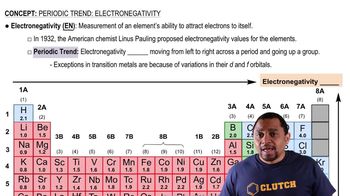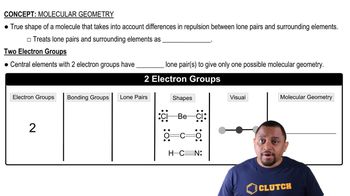Here are the essential concepts you must grasp in order to answer the question correctly.
Bond Dipole
A bond dipole is a measure of the polarity of a chemical bond between two atoms. It arises due to the difference in electronegativity between the bonded atoms, resulting in an uneven distribution of electron density. The dipole is represented as a vector pointing from the less electronegative atom to the more electronegative atom, indicating the direction of the partial positive and negative charges.
Recommended video:
Electronegativity
Electronegativity is the ability of an atom to attract electrons in a chemical bond. It is a key factor in determining the polarity of a bond; atoms with higher electronegativity will pull electron density closer to themselves. The difference in electronegativity between two bonded atoms helps predict the bond's dipole moment, with larger differences leading to stronger dipoles.
Recommended video:
Molecular Geometry
Molecular geometry refers to the three-dimensional arrangement of atoms within a molecule. The shape of a molecule influences how bond dipoles interact and combine, affecting the overall molecular dipole moment. Understanding the geometry is crucial for predicting the direction and magnitude of bond dipoles, as symmetrical arrangements can lead to cancellation of dipoles, while asymmetrical shapes can result in a net dipole.
Recommended video:
Molecular Geometry with Two Electron Groups



